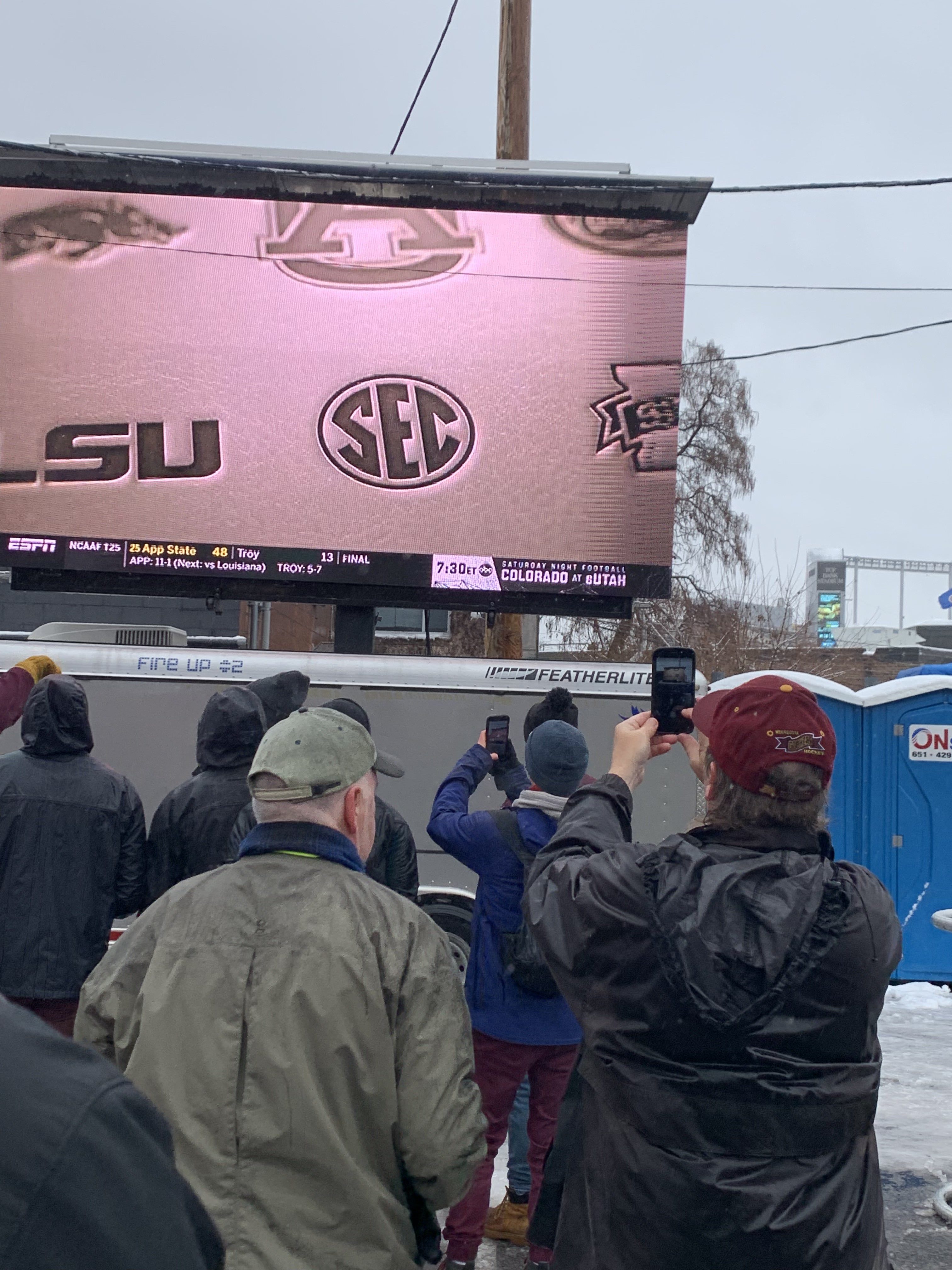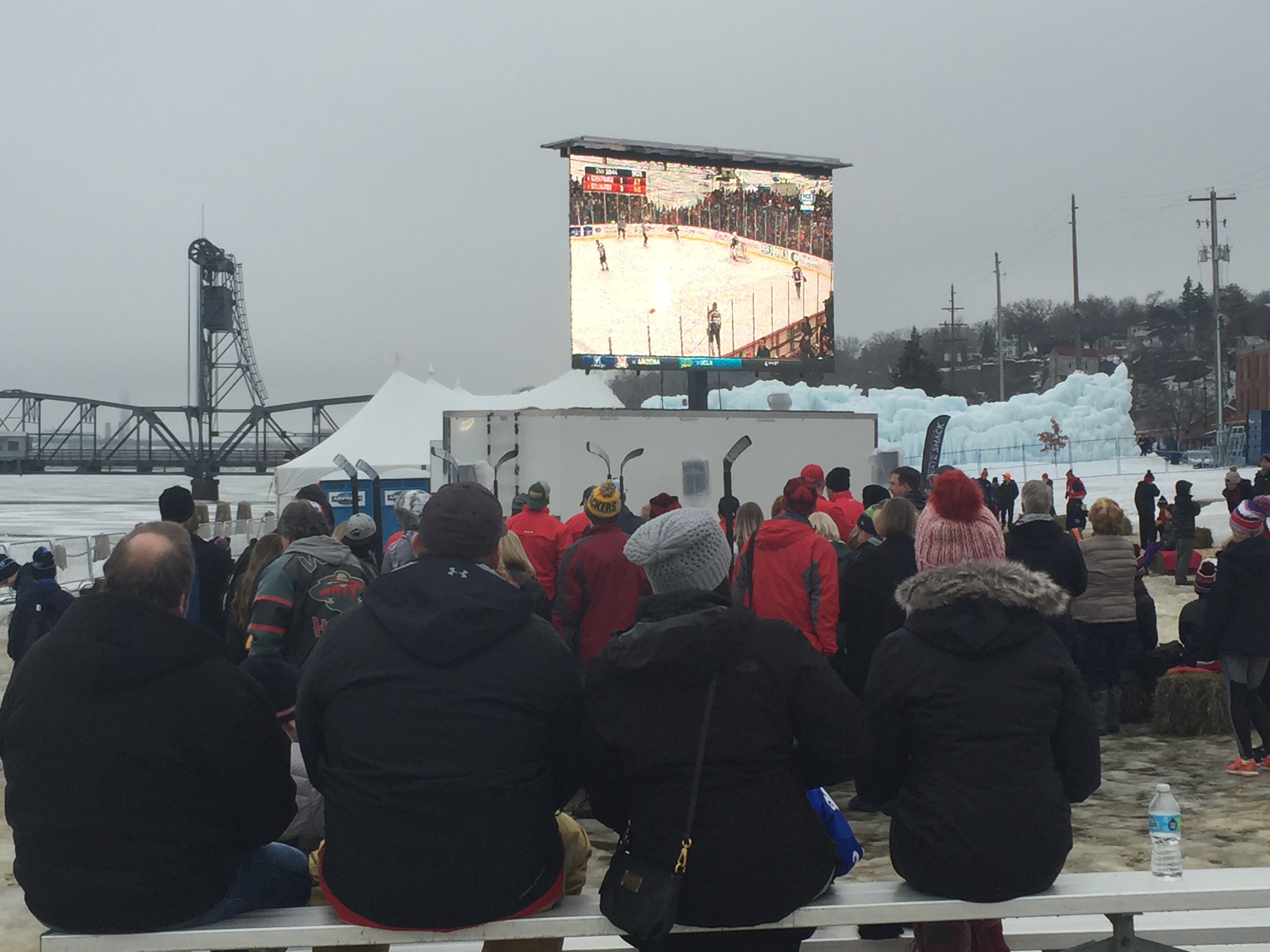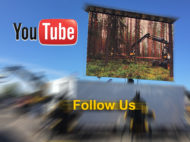LED Lessons: Explaining Viewing Distance for LED Screens
- Indoor Event
- Published on Thursday, 31 December 2020 09:15
- Fire Up Video
- 0 Comments
 What is “Viewing Distance” in Reference to LED Screens?
What is “Viewing Distance” in Reference to LED Screens?
In the simplest terms, viewing distance refers to the distance that a viewer is from a video wall. The actual viewing distance can be broken into the minimum viewing distance, best viewing distance, and farthest viewing distance. It is not an exact science, as it is subjective to each viewer. However, there are guidelines and different ways people have come up with to calculate an approximate distance. All that matters is that your viewers have a good viewing experience when looking at your screens.
You want a viewing distance where guests can’t see the individual LED pixels that make up your screen, as well as the blank space between the pixels, also known as pixel pitch. There is a wide range of distances that can be acceptable, but some are better than others, and depend on several factors, including pixel pitch, size of the LED display, content, viewing angle, make and kind of the LED technology, and more. In general, the further away the viewer, the clearer the picture gets. However, once you reach a certain point, the pixel pitch isn’t substantially noticeable, and the image will look similar.
Different Categories of Viewing Distances
- Minimum Viewing Distance: This is the closest distance a viewer can get before the quality starts to fade. You will begin to notice individual pixels and the gaps between pixels. However, this is just a recommended number, and the picture quality may still be quite good unless you get far below this minimum distance.
- Best Viewing Distance: Everything else being equal, this is the optimal viewing distance that provides the highest quality image for viewers with 20/20 vision. Getting too much further past this, and all images begin to look similar, making the pixel pitch mostly irrelevant. Viewers can also get closer to the screen without losing much quality until they hit the minimum distance.
- Farthest Viewing Distance: This is exactly what it says, it is the furthest distance that the image on the screen can clearly be seen.
Although not a hard rule, the minimum viewing distance is roughly half the distance of the best viewing distance. So if the best viewing distance is 40 feet, the minimum distance would be around 20 feet. However, closer than 20 feet still provides a good quality until a certain point. And further than 40 feet will still provide the best viewing distance until the the viewer can no longer clearly see the image.
How to Estimate Viewing Distances
 As mentioned, the best viewing distance is dependent on the viewer, and there are a variety of other factors that could be involved. We can assume everything else is the same, however, there is not a concrete answer that can be given. But we can do our best to estimate this, although there are also many different opinions and theories as to how to get the most accurate number.
As mentioned, the best viewing distance is dependent on the viewer, and there are a variety of other factors that could be involved. We can assume everything else is the same, however, there is not a concrete answer that can be given. But we can do our best to estimate this, although there are also many different opinions and theories as to how to get the most accurate number.
- One of the simplest formulas is the 10X rule, which takes the pixel pitch and multiplies it by 10 to get the distance in feet.
ex. 4.8mm pitch x 10 = 48 foot best viewing distance - Christie’s Rule of Thumb 8 takes the same idea as the 10X rule, but this considers a multiplication of 8 more accurate
ex. 4.8mm pitch x 8 = 38.4 foot best viewing distance - The Visual Acuity Distance, or retina distance, calculates the distance form an LED screen that person with 20/20 should be to avoid a pixelated image by multiplying the pixel pitch by 3438 to get the Visual Acuity Distance in mm.
ex. 4.8mm pitch x 3438 = 16,502.4mm = 54.1 feet - The Average Comfortable Viewing Distance takes several factors into account to make a rough estimate that can be subjective to the viewer.
ex. This estimates a 4.8mm pixel pitch to have a comfortable viewing distance of approximately 27 feet - Other LED companies have other formulas similar to the 10X rule, but find other multipliers more accurate.
ex. Using these calculations, our 4.8mm pitch tiles would have a best viewing distance of: Absen- 15.75 feet, a Dutch retailer- 7.2 feet, PixelFLEX- 14.4 feet, NanoLumens: 19.2 feet
As you can see by the different guidelines and calculations, the estimated best viewing distance can vary greatly. For our 4.8mm tiles, according to these suggestions vary anywhere from 7 feet to 54 feet. That’s a huge difference! It can depend on what they consider “best” viewing distance, as well as the other factors mentioned above.
Pixel Pitch, Resolution, and Viewing Distance
Pixel pitch and resolution will be covered in other LED Lessons, but they are important as related to viewing distance. They are all connected and impact each other. With a smaller pixel pitch, the best viewing angle can be much closer, meaning that guests can get closer to the LED display without losing image quality. Also with smaller pixel pitch, you can achieve higher resolution while using less LED tiles in a smaller size screen. Any pixel pitch can get to a resolution such as HD or 4K, it just may take more space and more equipment to get there if it is a larger pitch. So with a better resolution, you will have a closer viewing distance.
![]()
Conclusion
It’s difficult to give a hard answer on what is the exact best viewing distance for any screen because it depends on so many factors, and is all subjective to the user. To get the lowest viewing distance, you first want to make sure you have high quality content that will play well on your screen. If the quality of your content is inferior to your video board, it will look poor no matter what. The most important factor is the pixel pitch. In general, the lower the pitch, the shorter the best viewing distance is.
While a lower pixel pitch always provides the highest quality image with the lowest viewing distance, all other things equal, the lowest pixel pitch may not be the best choice. For certain applications where viewers won’t be right in front of the screen, you don’t need the low pitch. At many outdoor events, the human eye can no longer detect individual pixels once they get a certain distance away, so you are just paying extra for a lower pitch, when in fact your guests won’t be able to tell the difference. It may be nice, but LED tiles get much more expensive with lower pitches.
So in short, take some of the guidelines to form your best opinion, ask your LED provider what they recommend for the specific product, take your experience to decide what is good or acceptable, and then just accept that there is no definitive answer. Do your best to get close, and remember that lower pixel pitch will get a better viewing distance.
You can take a look at our graphic that takes a few different calculations and guidelines to display a general use pixel pitch and viewing distance chart for different applications.
About Fire Up Video
Fire Up Video provides mobile LED screen rentals for events across the Midwest and more, including states such as Iowa, Minnesota, South Dakota, North Dakota, Wisconsin, Illinois, Michigan, Indiana, Ohio, Tennessee, Kentucky, Missouri, Oklahoma, Nebraska, Kansas, Colorado, and more. For more information, please contact us at 612-759-1012 or baum3@earthlink.net.





 Dave was born in 1960 and grew up in a suburb of the Twin Cities. His first venture into large...
Dave was born in 1960 and grew up in a suburb of the Twin Cities. His first venture into large... 
Leave a Reply